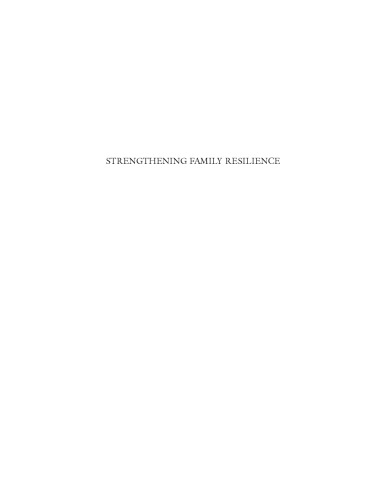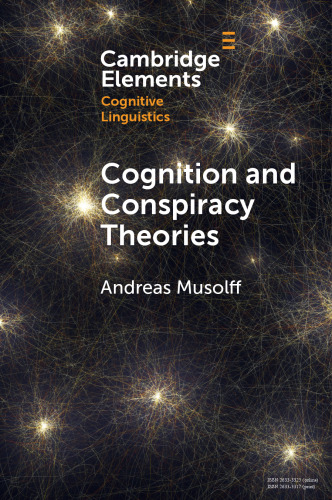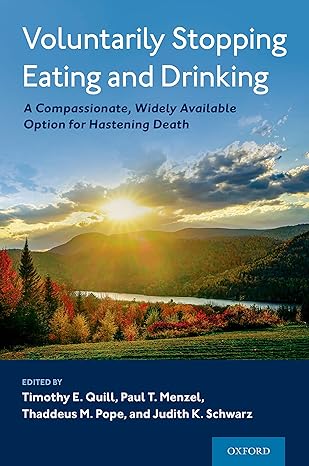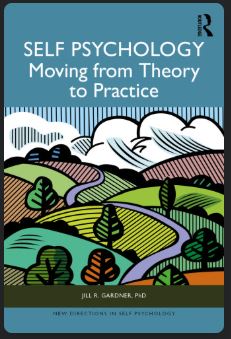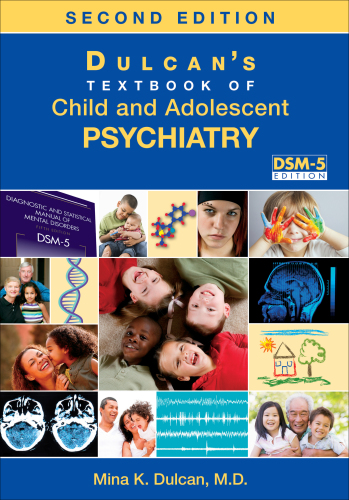the traditional patriarchal model, most men today share with women the desire for a full and equal partnership and involvement in family life (Haddock, Zimmerman, & Lyness, 2003). Living out this aim is still a work in progress. CULTURAL DIVERSITY AND SOCIOECONOMIC DISPARITY One of the most striking features of North American families today is the rapid increase in cultural diversity. The foreign-born population in the United States has more than tripled since 1970, with most coming from Latin America and Asia (McGoldrick, Giordano, & Garcia-Preto, 2005). Currently, over one in five persons is either foreign-born or a first-generation resident. Through immigration and higher birth rates, the proportion of Latino, Asian, and African American families has risen to nearly half of the U.S. population and is expected to increase further in coming decades. Growing numbers of children and families are multi- ethnic and bi- or multiracial (Root, 2001). Contrary to the myth of the melting pot, American families, with a long tradition of immigration, have always been diverse. In earlier peri- ods, strong pressure for assimilation into mainstream society led many immigrants to cut off from their extended family ties and ethnic tradi- tions left behind. More recently, experts working with immigrant fami- lies find that they are more resilient in navigating the challenges of adap- tation when they maintain continuities with their past alongside the changes they must make, essentially becoming bicultural (Falicov, 1998, 2003). Parents are encouraged to raise their children with knowledge of and pride in their kin and community roots, language, ethnic heritage and religious values. Cultural pluralism can be seen as a source of strength that vitalizes a society. Sadly, recent economic insecurities and fears of terrorism have aggravated racial discrimination and intolerance toward non-European immigrants and minorities, complicating adaptive challenges for those families. Socioeconomic influences must be taken into account in appraising family functioning and resilience. Social scientists have too often gener- alized to all families on the basis of white middle-class experience. With the intact, self-sufficient nuclear family model taken as the norm, there has been insufficient appreciation of the strong extended family bonds that foster resilience in low-income families, especially in African Ameri- can and immigrant families who have had to struggle to overcome 34 OVERVIEW on to familiar patterns and yet question idealized family models from the past that don’t fit their current situation, resources, and challenges. There is widespread confusion about the very structure and meaning of family relationships—about what is “normal” (i.e., typical and expect- able) in family life and how to construct “healthy” families that function well and are resilient under stress. Yet most families are showing remarkable resilience, making the best of their situations and inventing new models of human connected- ness. As sociologist Judith Stacey (1990) has observed, these “brave new families” are creatively reworking family life in a variety of household and kinship arrangements, drawing on a wide array of resources, and devising new gender and relationship strategies to cope with new chal- lenges. In her ethnographic study of working-class families, she found men and women sharing housework and child care, unmarried working women choosing to have children on their own, strong extended family connections sustained across serial marriages, and longtime close friends claiming kinship. She also found same-sex couples exchanging marital vows, sharing childrearing commitments, and more openly seeking com- munity and spirituality outside mainstream institutional forms. Particu- larly impressive were bold and creative initiatives to reshape the experi- ence of divorce from a painful, bitter schism and loss of resources into a viable kin network involving new and former partners, multiple sets of children, step-kin, and friends—into households and support systems collaborating to survive and flourish. It is ironic that such families are termed “nontraditional” as their flexibility, diversity, and community re- call the resilience found in the varied households and loosely knit kin- ship of the past. Because today’s world is marked by tumultuous changes, our lives can seem utterly unpredictable, with few certainties. The rise in religious fundamentalism may be seen in part as a reaction. The loss of bearings can be overwhelming and alarming. Yet rather than collapsing under these pressures and threats, Robert Lifton (1993) contends that we hu- mans are surprisingly resilient. He compares our predicament and re- sponse to those of the Greek god Proteus: Just as Proteus was able to change shape in response to crisis, we create new psychological, social, and familial configurations, exploring new options and transforming our lives many times over the life course. Similarly, Mary Catherine Bateson (1994) contends that adaptation “comes out of encounters with novelty that may seem chaotic” (p. 8). An intense multiplicity of vision, enhancing insight and creativity, is necessary. Although we can never be 40 OVERVIEW fully prepared for the demands of the moment, Bateson argues that we can be strengthened to meet uncertainty: The quality of improvisation characterizes more and more lives today, lived in uncertainty, full of the inklings of alternatives. In a rapidly changing and interdependent world, single models are less likely to be viable and plans are more likely to go awry. The effort to combine multi- ple models risks the disasters of conflict and runaway misunderstand- ing, but the effort to adhere blindly to some traditional model for a life risks disaster not only for the person who follows it but for the entire system in which he or she is embedded, indeed for all other living sys- tems with which that life is linked. (1994, p. 8)
چکیده فارسی
الگوی سنتی مردسالارانه، امروزه اکثر مردان تمایل به مشارکت و مشارکت کامل و برابر در زندگی خانوادگی با زنان دارند (هادوک، زیمرمن و لاینس، 2003). تحقق این هدف هنوز یک کار در حال پیشرفت است. تنوع فرهنگی و نابرابری اجتماعی-اقتصادی یکی از بارزترین ویژگی های خانواده های آمریکای شمالی امروزه افزایش سریع تنوع فرهنگی است. جمعیت متولدین خارج در ایالات متحده از سال 1970 بیش از سه برابر شده است که اکثر آنها از آمریکای لاتین و آسیا هستند (مک گلدریک، جوردانو و گارسیا-پرتو، 2005). در حال حاضر، بیش از یک نفر از هر پنج نفر متولد خارجی یا مقیم نسل اول هستند. از طریق مهاجرت و نرخ بالای تولد، نسبت خانواده های لاتین، آسیایی و آفریقایی آمریکایی به تقریباً نیمی از جمعیت ایالات متحده افزایش یافته است و انتظار می رود در دهه های آینده بیشتر افزایش یابد. تعداد فزاینده ای از کودکان و خانواده ها چند قومیتی و دو یا چند نژادی هستند (روت، 2001). برخلاف افسانه ی دیگ ذوب، خانواده های آمریکایی با سنت طولانی مهاجرت، همیشه متنوع بوده اند. در دورههای قبلی، فشار شدید برای همگونسازی در جامعه اصلی باعث شد بسیاری از مهاجران از پیوندهای خانوادگی گسترده و سنتهای قومی به جا مانده خود قطع شوند. اخیراً، کارشناسانی که با خانوادههای مهاجر کار میکنند، دریافتهاند که وقتی با گذشته خود در کنار تغییراتی که باید ایجاد کنند، تداوم میدهند و اساساً تبدیل به دوفرهنگی میشوند، در مقابله با چالشهای سازگاری انعطافپذیرتر هستند (Falicov, 1998, 2003). والدین تشویق می شوند که فرزندان خود را با دانش و افتخار به ریشه های خویشاوندی و اجتماعی، زبان، میراث قومی و ارزش های مذهبی خود تربیت کنند. کثرت گرایی فرهنگی را می توان منبع قدرتی دانست که جامعه را زنده می کند. متأسفانه، ناامنیهای اقتصادی اخیر و ترس از تروریسم، تبعیض نژادی و عدم تحمل نسبت به مهاجران و اقلیتهای غیراروپایی را تشدید کرده و چالشهای سازگاری را برای آن خانوادهها پیچیده کرده است. تأثیرات اجتماعی و اقتصادی باید در ارزیابی عملکرد خانواده و تاب آوری در نظر گرفته شود. دانشمندان علوم اجتماعی اغلب بر اساس تجربه طبقه متوسط سفیدپوستان به همه خانواده ها تعمیم داده اند. با در نظر گرفتن الگوی خانواده هستهای دست نخورده و خودکفا، قدردانی کافی از پیوندهای قوی خانواده گسترده وجود ندارد که تابآوری را در خانوادههای کمدرآمد، بهویژه در خانوادههای آمریکایی آفریقاییتبار و مهاجران که مجبور به مبارزه با این خانوادهها هستند، تقویت میکند. بر الگوهای آشنا غلبه کنید و در عین حال مدلهای خانواده ایدهآلی از گذشته را که با موقعیت، منابع و چالشهای کنونی آنها تناسب ندارد، زیر سوال ببرید. سردرگمی گسترده ای در مورد ساختار و معنای روابط خانوادگی وجود دارد - در مورد اینکه چه چیزی "عادی" (یعنی معمولی و قابل انتظار) در زندگی خانوادگی است و چگونه می توان خانواده هایی "سالم" ساخت که به خوبی عمل می کنند و در برابر استرس انعطاف پذیر هستند. با این حال، اکثر خانوادهها انعطافپذیری قابلتوجهی از خود نشان میدهند، از موقعیتهای خود بهترین استفاده را میکنند و مدلهای جدیدی از ارتباط انسانی را ابداع میکنند. همانطور که جودیت استیسی (1990) جامعه شناس مشاهده کرده است، این "خانواده های جدید شجاع" به طرز خلاقانه ای زندگی خانوادگی را در انواع ترتیبات خانوادگی و خویشاوندی بازسازی می کنند، از طیف گسترده ای از منابع استفاده می کنند، و استراتژی های جنسیتی و روابط جدید را برای مقابله با مشکلات جدید ابداع می کنند. - لنج ها او در مطالعه قومنگاری خود بر روی خانوادههای طبقه کارگر، متوجه شد که مردان و زنان در کارهای خانه و مراقبت از کودکان سهیم هستند، زنان کارگر مجردی که به تنهایی بچهدار میشوند، روابط خانوادگی گستردهای قوی که در طول ازدواجهای زنجیرهای برقرار است، و دوستان نزدیک دیرینه ادعای خویشاوندی دارند. او همچنین زوجهای همجنس را در حال رد و بدل کردن نذرهای زناشویی، مشارکت در تعهدات فرزندآوری، و آشکارا به دنبال اجتماع و معنویت خارج از اشکال نهادی اصلی یافت. به ویژه ابتکارات جسورانه و خلاقانه برای تغییر شکل تجربه طلاق از یک شکاف دردناک، تلخ و از دست دادن منابع به یک شبکه خویشاوندی پایدار شامل شرکای جدید و سابق، چندین مجموعه از فرزندان، خویشاوندان ناتنی و دوستان بسیار چشمگیر بود. به خانواده ها و سیستم های حمایتی که برای بقا و شکوفایی همکاری می کنند. طعنه آمیز است که چنین خانواده هایی "غیرسنتی" نامیده می شوند زیرا انعطاف پذیری، تنوع و اجتماع آنها یادآور انعطاف پذیری موجود در خانواده های متنوع و روابط خویشاوندی گذشته است. از آنجایی که دنیای امروزی با تغییرات پر فراز و نشیب مشخص شده است، زندگی ما می تواند کاملاً غیرقابل پیش بینی به نظر برسد، با قطعیت های کمی. افزایش بنیادگرایی مذهبی ممکن است تا حدی به عنوان یک واکنش تلقی شود. از دست دادن یاتاقان ها می تواند طاقت فرسا و هشدار دهنده باشد. با این حال، رابرت لیفتون (1993) به جای فروپاشی تحت این فشارها و تهدیدها، ادعا می کند که ما انسان ها به طرز شگفت انگیزی انعطاف پذیر هستیم. او شرایط و پاسخ ما را با مشکلات خدای یونانی پروتئوس مقایسه میکند: همانطور که پروتئوس توانست در واکنش به بحران شکل خود را تغییر دهد، ما پیکربندیهای روانی، اجتماعی و خانوادگی جدیدی ایجاد میکنیم و گزینههای جدید را بررسی میکنیم و زندگی خود را چندین برابر تغییر میدهیم. دوره زندگی به طور مشابه، مری کاترین بیتسون (1994) ادعا می کند که اقتباس "از رویارویی با چیزهای جدیدی که ممکن است آشفته به نظر برسد" می آید (ص. 8). تعدد دید شدید، تقویت بینش و خلاقیت، ضروری است. اگرچه ما هرگز نمیتوانیم برای خواستههای لحظهای کاملاً آماده باشیم، بیتسون استدلال میکند که میتوانیم برای مواجهه با عدم قطعیت تقویت شویم: کیفیت بداههپردازی مشخصکننده زندگیهای امروزی بیشتر و بیشتری است که در عدم قطعیت زندگی میکنند و مملو از مفاهیم جایگزین. در دنیایی که به سرعت در حال تغییر و وابسته به یکدیگر هستند، مدلهای منفرد کمتر قابل اجرا هستند و برنامهها به احتمال زیاد به اشتباه میروند. تلاش برای ترکیب مدلهای چندگانه، خطر فاجعههای درگیری و سوء تفاهم فراری را به همراه دارد، اما تلاش برای پایبندی کورکورانه به برخی از مدلهای سنتی برای زندگی، نه تنها برای فردی که از آن پیروی میکند، بلکه برای کل سیستمی که در آن زندگی میکند، به خطر میاندازد. یا در واقع برای تمام سیستم های زنده دیگری که آن زندگی با آنها مرتبط است، تعبیه شده است. (1994، ص 8)
ادامه ...
بستن ...
